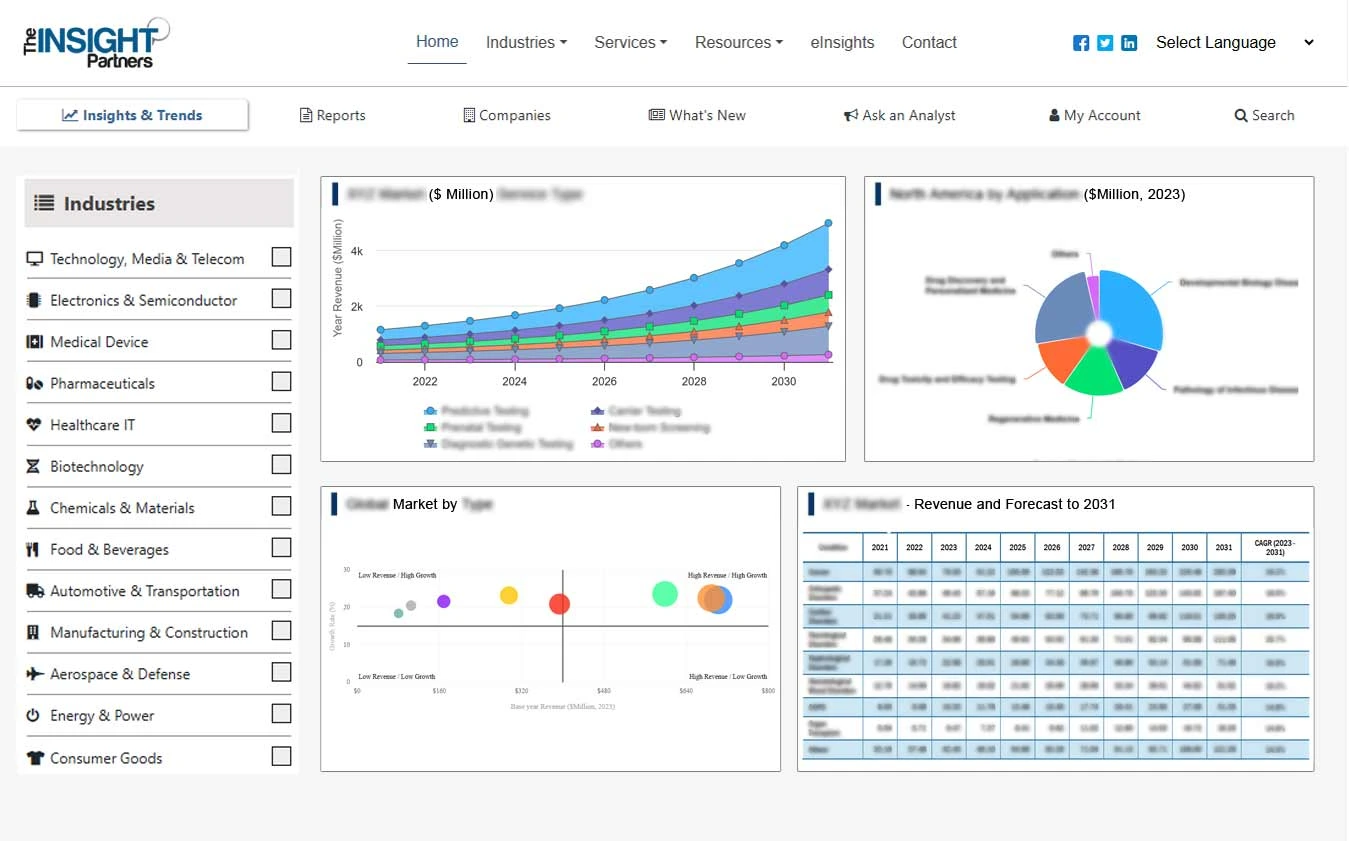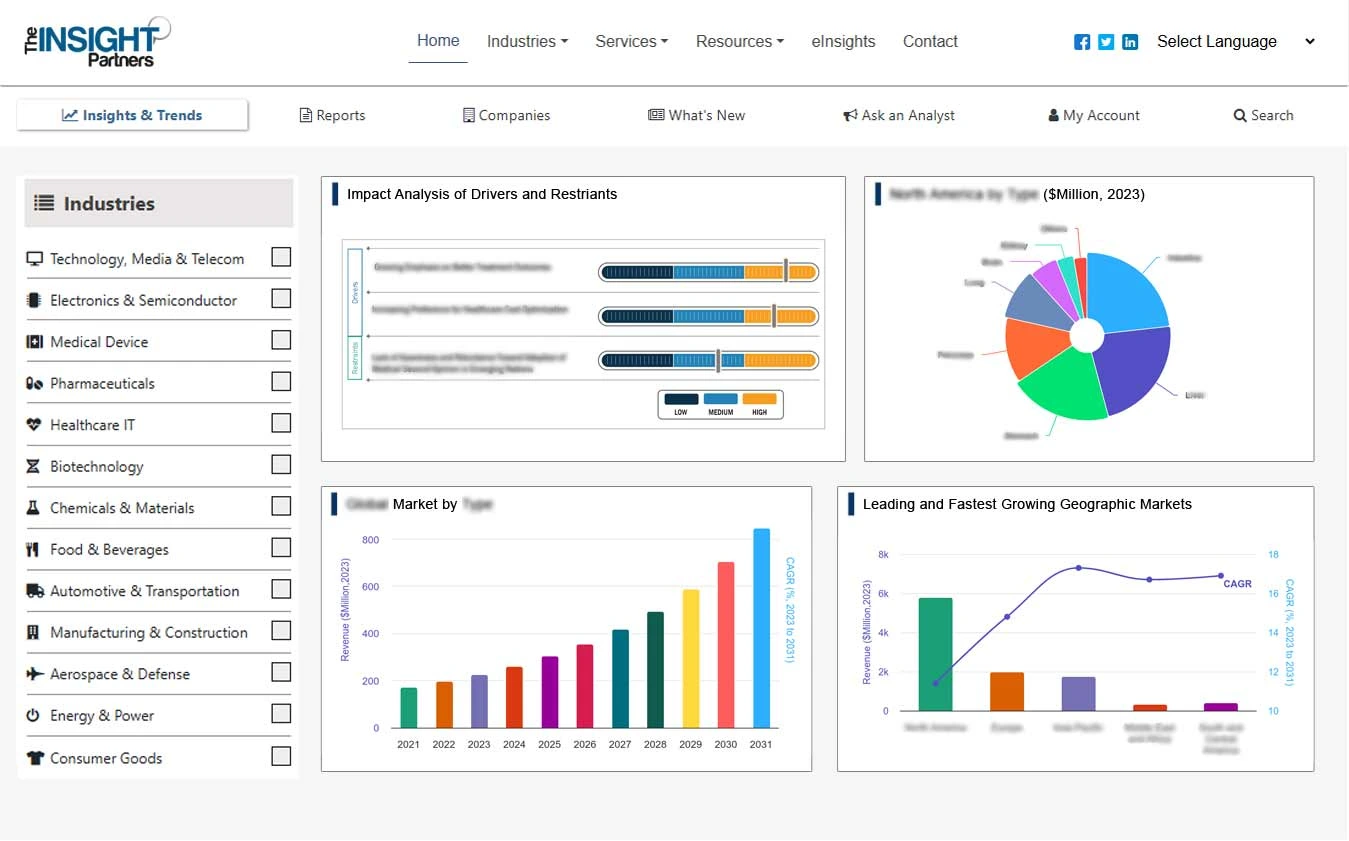The Middle East and Africa artificial cornea and corneal implant market is expected to reach US$ 27.78 million by 2028 from US$ 18.46 million in 2021; it is estimated to grow at a CAGR of 6.0% from 2021 to 2028.
The key factors that are driving the growth of market are rising prevalence of eye diseases that causes corneal blindness, significantly rising elderly population are factors propelling the artificial cornea and corneal implant market. However, the expensive ophthalmology surgeries and devices may hamper the growth of the Middle East and Africa artificial cornea and corneal implant market in the forecast period.
Rise in geriatric population in developed countries such as the US, the UK and in developing countries such as UAE and Saudi Arabia is driven by the modernization of healthcare facilities and improvements in healthcare services, which have boosted the life expectancy in these countries. According to the United Nation’s World Population Ageing 2017 report, by 2050, all regions of the world, except Africa, would have ~25% or more of their populations aged 60 and above. The loss of vision is a major health problem among the elderlies. At the age of 65, one-third of people suffer from an eye disease with impaired vision. Age-related macular degeneration, glaucoma, cataracts, and diabetic retinopathy are the most common causes of vision loss among the people from this age group. Age-related macular degeneration results in the loss of central vision. Optic nerve injury and visual field loss can occur as a result of primary open-angle glaucoma. As this ailment can be asymptomatic at first, elderly people should have regular check-ups. Although cataracts are a common source of visual issues in these people, surgeries to remove them is usually successful. Diabetic retinopathy is also common among the older people during the early stages of diabetes or at the time of diagnosis. When a patient is diagnosed with diabetes, a mydriatic examination is recommended, as well as once a year thereafter. Thus, the rise in geriatric population is fuelling the artificial cornea and corneal implant market growth.
The healthcare sector in the UAE has undergone a considerable number of infrastructure and procedural changes to position itself as a leading healthcare provider across Middle East. These improvements have been recognized throughout the COVID-19 pandemic due to the continuous investments made to improve the sector’s hard and soft infrastructure. However, the pandemic had a significant impact on healthcare operations in other countries. Due to the COVID-19 pandemic, a substantial number of planned elective surgery operations was cancelled or postponed. The pandemic has brought unprecedented challenges for eye care in the Middle east and Africa. Owing to the increase in the number of COVID-19 confirmed cases in Lagos, hospital managers decided to reduce services to protect staff. Non-urgent follow up appointments, elective surgeries, and clinic consultations were postponed. Only emergency cases of conditions such as retinoblastoma, retinopathy of prematurity, red eye, trauma, and sudden vision los were attended. Similarly, in Ethiopia, eye health units suspended eye examinations and attended only injury-related eye emergencies due to the fear of the spread of novel coronavirus. Elective ocular surgery has been suspended across the country. People with eye diseases, such as bilateral blindness from cataract, are being turned away, even if surgery would improve vision. Also, corrective eyelid surgical services to treat trichiasis have been suspended, leaving hundreds of thousands of people at risk of getting an irreversible vision impairment. Community-based eye health surveys and ongoing research have also been discontinued, which has led to considerable delays in the planning of eye health services.

- This FREE sample will include data analysis, ranging from market trends to estimates and forecasts.
MIDDLE EAST AND AFRICA ARTIFICIAL CORNEA AND CORNEAL IMPLANT MARKET SEGMENTATION
By Type
- Human Cornea
- Artificial Cornea
By Transplant Type
- Penetrating Keratoplasty
- Endothelial Keratoplasty
- Others
By Disease Indication
- Fuchs’ Dystrophy
- Keratoconus
- Fungal Keratitis
- Others
By End User
- Hospitals
- Specialty Clinics and ASCs
- Others
By Country
- UAE
- Saudi Arabia
- South Africa
- Rest of Middle East and Africa
Company Profiles
- AJL OPHTHALMIC S.A
- LinkoCare Life Sciences AB
- CORNEA BIOSCIENCES, INC
- EyeYon Medical
- Florida Lions Eye Bank
Middle East and Africa Artificial Cornea and Corneal Implant Report Scope
| Report Attribute | Details |
|---|---|
| Market size in 2021 | US$ 18.46 Million |
| Market Size by 2028 | US$ 27.78 Million |
| Global CAGR (2021 - 2028) | 6.0% |
| Historical Data | 2019-2020 |
| Forecast period | 2022-2028 |
| Segments Covered |
By Type
|
| Regions and Countries Covered | Middle East and Africa
|
| Market leaders and key company profiles |
- Historical Analysis (2 Years), Base Year, Forecast (7 Years) with CAGR
- PEST and SWOT Analysis
- Market Size Value / Volume - Global, Regional, Country
- Industry and Competitive Landscape
- Excel Dataset



Report Coverage
Revenue forecast, Company Analysis, Industry landscape, Growth factors, and Trends

Segment Covered
This text is related
to segments covered.

Regional Scope
North America, Europe, Asia Pacific, Middle East & Africa, South & Central America

Country Scope
This text is related
to country scope.
Trends and growth analysis reports related to Life Sciences : READ MORE..
- AJL OPHTHALMIC S.A
- EyeYon Medical
- KERAMED, INC.
- Florida Lions Eye Bank
- Corneat Vision

 Get Free Sample For
Get Free Sample For